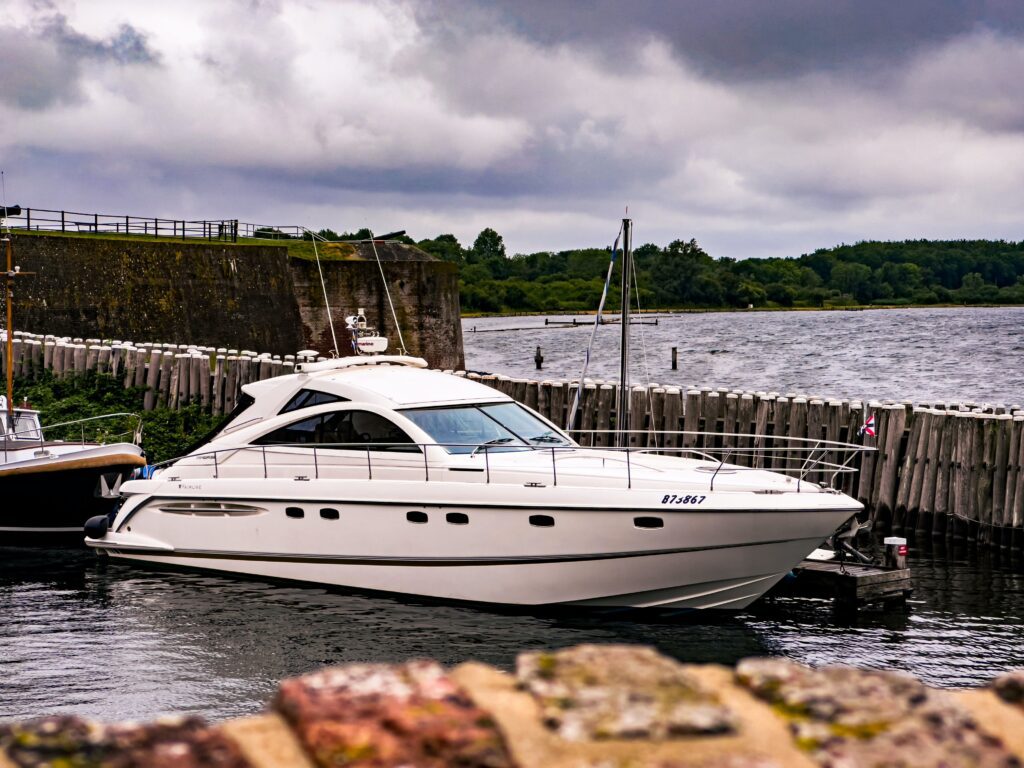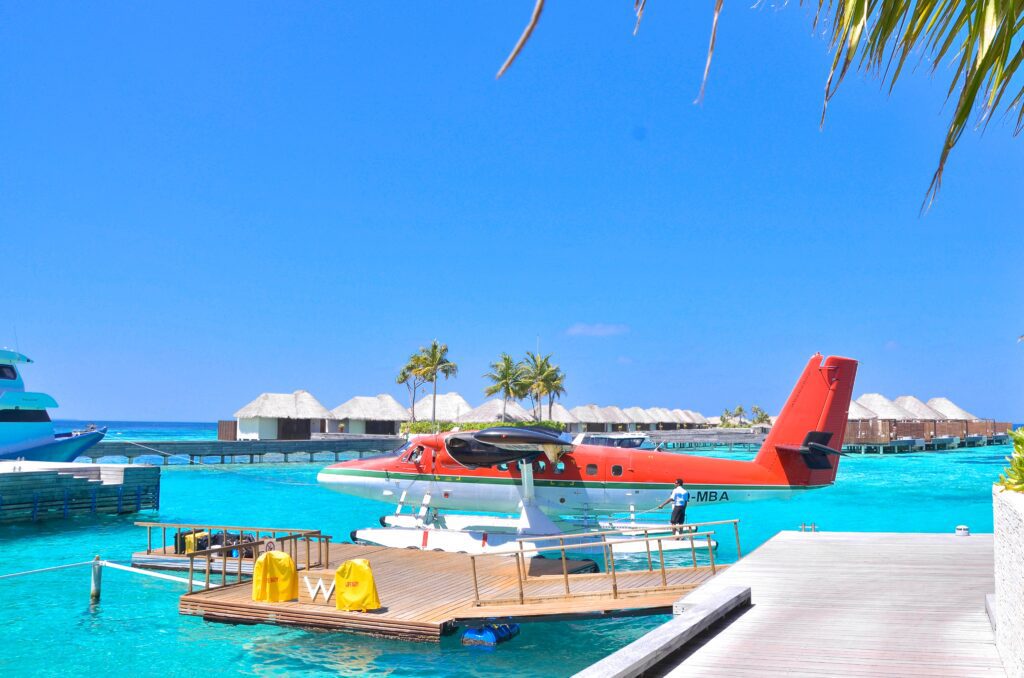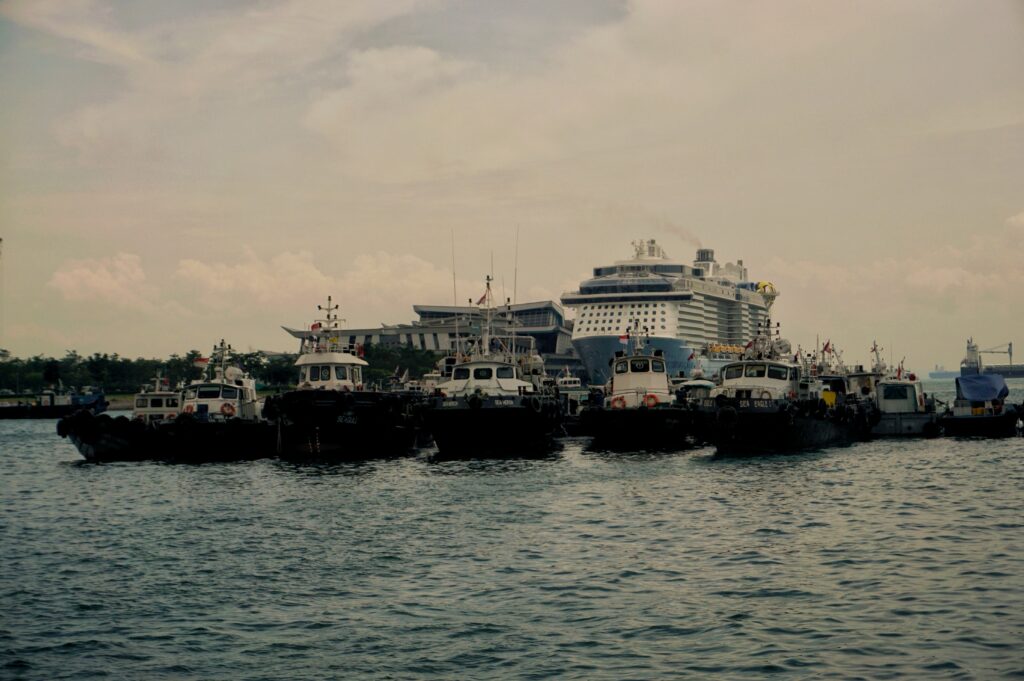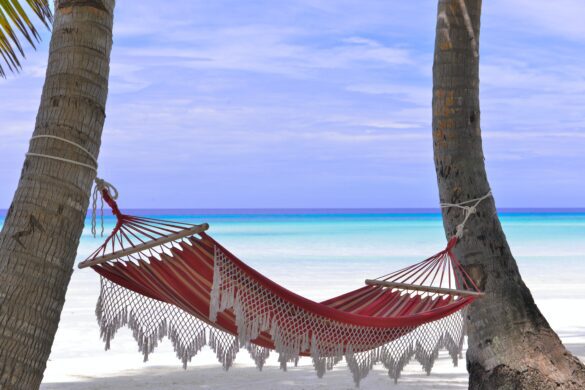Facts you should adhere to before visiting Maldives
- About Maldives
- How to Reach Maldives
- How to Get around the Maldives
- Best Time to Visit Maldives
- Culture and Custom
- Food in Maldives
- Things to do in Maldives
- Entry and Exit Requirements
About Maldives
You’ve probably seen pictures of the Maldives: picture-perfect private villas soaring over vivid blue waters, pristine white sand beaches, and breathtaking sunsets plunging into the horizon. The Maldives’ stunning natural beauty is something to witness; it’s something you can’t appreciate unless you visit.
The island nation of the Maldives is well-liked by honeymooners seeking privacy and by thrill seekers planning scuba diving and snorkeling excursions to explore the ocean’s depths. All visitors should undoubtedly spend a day touring Malé, the capital of the Maldives, while those seeking tranquility can unwind at one of the island spas.
How to Reach Maldives
The most popular means of transportation to the Maldives is by air. The Malé Airport serves domestic and international flights and is the biggest in this archipelago.
The airport is located on Hulhule Island, part of the North Male Atoll, nearest to the capital island of Male. It links the Maldives to many cities and nations around the globe, particularly those in South East Asia like China, India, and Sri Lanka.
The Maldives’ leading international airports are Male Airport, Gan International Airport, Hanimaadhoo International Airport, and Maafaru International Airport. Some domestic airports that make it simple to travel inside this archipelago are Laamu, Gnaviyani, and Dhaalu.
Air France, Air India, Qatar Airways, Alitalia, Emirates, Turkish Carriers, and other airlines fly to and from the Maldives. Additionally, the Maldives has a national airline that operates flights between numerous cities and nations.
How to Get around the Maldives
Walking is the most practical mode of transportation in the Maldives. Any resort you choose will be walkable since Malé’s capital is only 2.2 square miles. Since the boat network is not particularly broad, island hopping at your leisure is not the best alternative. Nevertheless, if you’re taking a boat, you’ll be able to maneuver these seas. You’ll probably be taken by a representative from your resort to the island you are staying after landing at Velana International Airport (MLE) on the island of Hulhule’. You’ll need to use a ferry, a seaplane, a speedboat, or a combination of the three to get to your location.
- On Foot
Walking is the most practical alternative once you arrive at your chosen island. The resort islands may all be reached on foot, as can Malé.
- On Yacht
This is among the top travel options for the wealthy and famous. The yacht is the best way to reach secluded islands and reefs in this archipelago. For the convenience of nautical visitors, many resorts have their docks. Once you arrive, you can either bring your boat or charter one. Remember that authorized tour companies might take you to islands often off-limits to tourists.

- Seaplane
Take a seaplane if you need to get somewhere quickly. You might be taken to and from the airport by one through your resort. On these short excursions, you’ll get a picturesque bird’s-eye view of the reefs and islands. Compare Trans Maldivian Airways and Atoll Transfer’s prices for an airborne island-hopping trip.

- Ferry
Although schedules are published, the local ferry network is relatively small, and vessels frequently arrive late or never appear. This method of transportation is not advised because it could be more dependable.

- Speedboat
In the Maldives, speedboat transfers have grown in popularity. By resort and distance, prices change. In some situations, you can reserve speedboat transportation separately, while other alternatives will arrange the transfer.

Best Time to Visit Maldives
November to April are the ideal months to visit the Maldives. Although the island country has a dry and wet rainy season, it is warm and bright all year round. Each season has benefits and drawbacks for travel. Due to low precipitation and high temperatures, the best months for a trip to the Maldives are November to April. The rooms at resorts are pricey because this is also the year’s busiest season. However, because each resort is located on its island, you won’t experience the swarms of tourists that you may in another location during the peak travel season.
The islands see between 5 and 10 inches of precipitation every month during the so-called rainy season, which runs from May to October. However, this time of year is well-liked by surfers due to the giant waves and better swells for surfing during these months. For this time of year, tourists may discover better offers (though the term “deal” is relative since the Maldives is a pricey location year-round).
Culture and Custom
Since the 12th century, the Maldives has been an Islamic country. Religious practices are ingrained in the culture thanks to this rich background. There are numerous mosques in Malé, the country’s capital, and many men and women are dressed conservatively. You should dress appropriately if you want to visit a mosque; nevertheless, you should be aware that not all mosques are open to non-Muslims. Additionally, you’ll see folks praying in front of others occasionally throughout the day. Reduce your voice and avoid walking in front of persons who are praying as a sign of respect. Expect to see some Islamic rituals, such as neighborhood restaurants closing during the daytime when people will be fasting, especially during Ramadan. Most overtly religious and cultural practices have been removed from the resorts.
Public demonstrations of love, like kissing or holding hands, are forbidden. Alcohol is also prohibited, even though it is sold and available on tourist islands. In this island country, homosexuality is likewise prohibited. Both men and women should wear conservative clothing while commuting to and from the airport and in Male and Hulhumale.

Food in Maldives
The Maldives are known for their curries, spicy fried fish, and samosas, which are pastries filled with savory fillings such as spiced potatoes and veggies. Due to the cuisine’s reliance on locally accessible products, many meals in the Maldives primarily incorporate fish, coconut, and starches. You may anticipate seeing a few species on Maldivian menus, including Mahi Mahi, wahoo, and tuna.
Remember that the Maldives is an Islamic country and that alcohol is not consumed there. Alcoholic beverages are, however, often permitted at resorts. If you’re staying at a high-end resort, you’ll probably have access to a broader selection of cuisines, from Middle Eastern and Asian to Italian and Spanish. Many hotels include breakfast, lunch, and supper buffets. You may choose an all-inclusive package with meals and drinks at select accommodations. Dining in the Maldives is highly pricey whether you select an all-inclusive or a la carte option.

Things to do in Maldives
- Scuba Diving
The Maldives are known for their clear blue water. Unfortunately, the Maldives experienced a disastrous coral bleaching event in 2016 that devastated over 70% of the coral there. Rising sea temperatures caused it. Scuba divers worldwide travel to the Maldives to see hawksbill and loggerhead turtles, manta rays, whitetip reef sharks, and other marine life. The priceless seascapes are gradually recuperating, even though diving in this area is still far from the kaleidoscopic burst of color it once was.

- Dolphin Watching
You won’t have remorse for spending a little extra on a luxurious sunset cruise in the Maldives because of the free-flowing champagne, the clean ocean air, and the candy-colored sky. Seeing a playful pod of spinner dolphins around your boat is a traditional experience for honeymooning couples. Still, even if you aren’t just wed, you can get swept up in the romance of the moment. The waters around the Maldives are teeming with them, and they frequently chase boats while corkscrewing out of the water seemingly for no reason.

- Parasailing
Apart from the occasional rooftop pool and seaplane flight, there aren’t many ways to gain a birds-eye perspective of these turquoise-trimmed islands in all their beauty because the Maldives is essentially pancake-flat (it’s the highest mountain on Villingili is only 5m high). Parasailing above the idyllic atolls of the Maldives is marketed as an adrenaline sport, but it’s incredibly tranquil. Just keep your camera securely fastened when doing this.

- Stay in an eco-conscious resort.
Being the nation with the lowest elevation in the world, the Maldives is especially susceptible to the effects of climate change. It’s critical to pick a hotel that emphasizes sustainability, given the adverse environmental impact of flying to these remote islands. However, it doesn’t necessarily mean you have to give up the lavish water villa of your dreams because some of the most expensive resorts are setting the bar for green initiatives.

- See Bioluminescence
We have seen pictures of the neon blue surf on moonlit beaches. The Maldivian archipelago’s entire interior might experience this night-time phenomenon, which is often associated with Vaadhoo. It happens when bioluminescent creatures in the water are disturbed. Like seeing the northern lights, you only need good timing (travel between June and October for the best chance) and a helping of luck.

Entry and Exit Requirements
International tourists to the Maldives must have a passport valid for at least six months beyond the date they plan to depart, with identification showing they have enough money to cover their expenses and a future itinerary. An automatic 30-day visa will be issued to you; it can be extended to a 90-day visa upon request. Before traveling, it is advised to have typhoid and hepatitis A shots. Visit the website of the U.S. Department of State for additional details.

